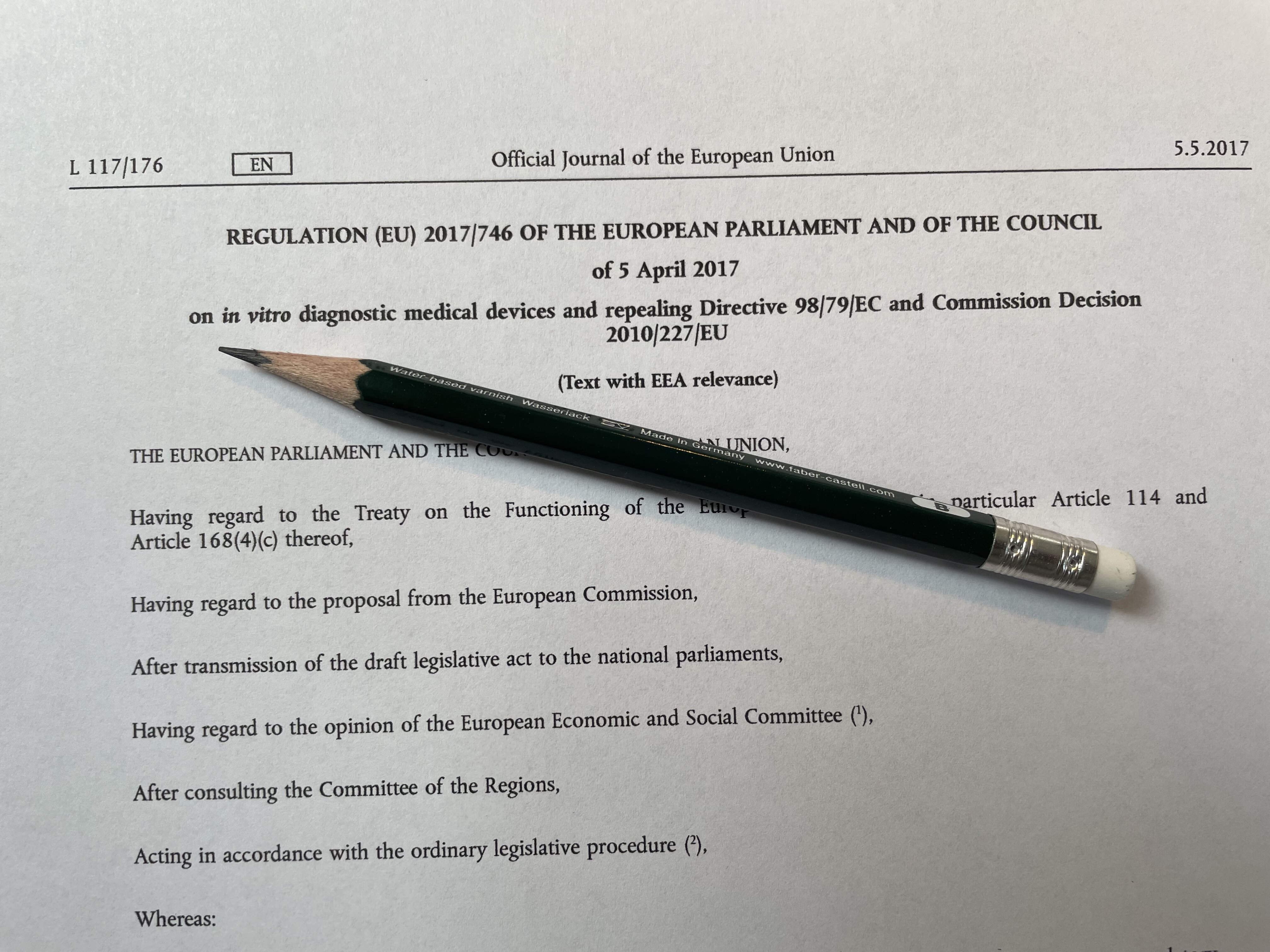EU IVDR: It’s about to begin!
The EU IVDR 2017/746 will enter into force on the 26th of May 2022, which is just around the corner. It is the new regulatory basis for placing on the market in vitro diagnostic medical devices on the EU.
The IVDR will replace the EU’s current Directive on in vitro diagnostic medical devices (98/79/EC); and, most importantly, products which are already approved must be recertified by May 26 this year.
As such, no “grandfathering provisions” on this one….
But what else changes?
There is an expanded product scope just like with the MDR (Medical Device Regulation EU 2017/745), which will cover diagnostic services - including Internet-based applications, genetic testing and other types of tests that give information regarding the patient’s predisposition to specific diseases or a susceptibility for a certain medical treatment.
Furthermore, there is a reclassification of In-vitro Diagnostic devices (IVDs) according to risk, where Class Ais for low-risk devices to Class D for high-risk devices.
Again, just like it’s cousin the MDR, there is a need for more rigorous clinical evidence. As such, manufacturers are asked to perform clinical studies in order to provide evidence of safety and performance, all in accordance with the risk class of the device.
Also, there is the implementation of the Unique Device Identification (UDI), so that traceability and recall of the device can be performed swiftly.
What is interesting in the new EU IVDR is that it is influenced by the FDA, where self-testing and near-patient-testing devices are already subject to a Pre-Market Approval (PMA) approach. Since for IVDs, there is a unique link between safety and effectiveness that is not generally related to contact between the device and patient, then the safety of the device relates to the impact of the device’s performance; and, in particular, on the impact of false negative and false positive results on the patient’s health.
Together with the PMA, the requirements for Post-Market Surveillance (PMS) are massively increased with a shorter timeline allowed for reporting failures. And, for that to be a successful endeavour, there needs to be a “Person Responsible for Regulatory Compliance” (PRRC).What this means is that manufacturers will be obliged to take appropriate Product Liability (PL) insurance with sufficient coverage to ensure that harmed un-happy patients are compensated for any damage or associated mis-treatment. Attention should be paid, that the PRRC is not liable, only the manufacturer and the EU Authorised Representative are liable for product defects.
All in all, the objective is to reduce the risks of unsafe devices or mambo-jambo devices that claim-much-and-do-little….
Catarina Carrão
